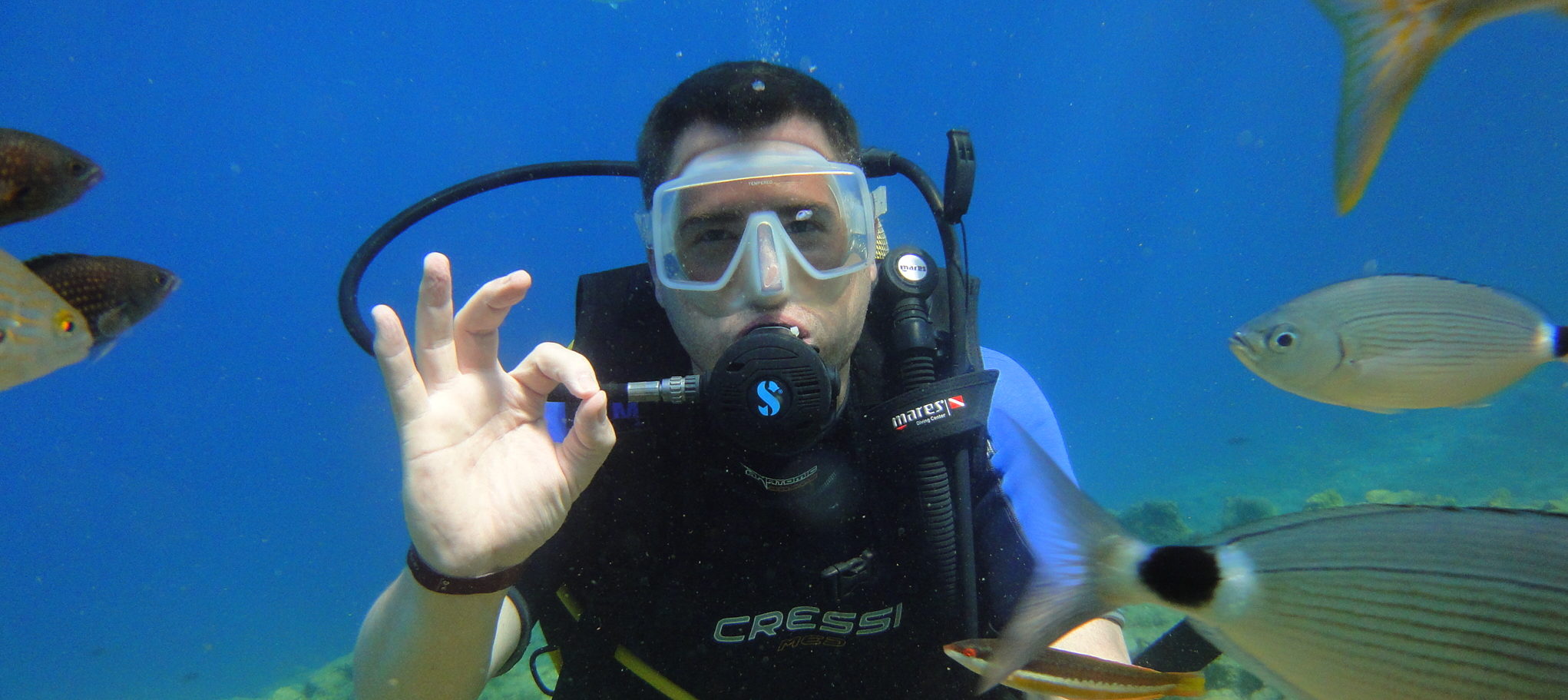As we grow older we become more risk averse. This is usually noticeable when we look at our kids. We watch them leap out of trees, jump off high diving boards. Or take to their skateboards; things we used to do without a second thought when we were their age.
In my early 20s, a bunch of friends and I took up sky-diving. Even with thumping adrenaline and bravado, there was still a moment of hesitation as I as I stepped out of a perfectly good aircraft. But as I clutched the wing strut and let go to plunge earthwards, nothing was going to stop me.
Fast forward 18 years and I was standing on the side of a swimming pool at a holiday resort getting the ins and outs of scuba diving from an instructor. After a brief introduction to the equipment and the hand signals to be used underwater I found myself being pushed to the bottom of the swimming pool by the instructor and then guided around.
I was immediately uncomfortable because I felt out of control. Although only 1.5 metres deep, it felt so unnatural to be breathing underwater and the small amount of water leaking into my mask didn’t help either. After a couple of minutes, it was over and the instructor asked if I’d like to join the dive course the next day. I couldn’t say that I’d enjoyed the test in the pool, but the friend I was with was up for it so I decided to give it a second chance.
Keeping My Head Above Water
I spent the evening pondering all that could go wrong. What if the equipment failed or we ran out of air? What if I got a lung full of seawater? Would there be any sharks? Should I bail out and stick to something more comfortable like drinking beer while lying in the sun?
Applying some sense and reason, I found myself aboard the dive boat the next morning awaiting instructions. Each dive instructor would lead two students down to five metres, controlling their buoyancy and direction.
The afternoon dive would follow the same format. If we were feeling comfortable we could try to achieve the first level of scuba certification that would allow us to dive without holding on to an instructor – not unsupervised of course. This meant passing some tests before being allowed to do so. For me, this was definitely not a consideration. I hadn’t particularly enjoyed the session in the pool and I just wanted to make it through the first dive.
To my surprise, the first dive went well after the initial shock of realising I was breathing underwater. Having the instructor control my movement certainly helped because I really needed to focus on breathing.
We explored the sea around the dive boat and before I knew it, 30 minutes was over. What a triumph! While I was relieved the ordeal was over, I was also disappointed because it was over so quickly. What a change in mindset – 30 minutes was all it took to move from fear, uncertainty, and doubt to looking forward to my second dive.
Relief
Back on the boat, I considered completing the certification course, which had definitely not been an option that morning.
After lunch, we (the now “advanced” dive group) were briefed and the tests were explained to us. We would descend to a depth of 1.5 metres where we had to successfully complete a number of tests to be allowed to dive unaided to a depth of 12 metres. This included removing and replacing our regulators, having our masks pulled away from our faces and clearing the water out, and then removing our regulators again, letting them drift away and then retrieving them. We underwent these tests one by one and having just gotten used to the concept of breathing underwater, this was a significant mental hurdle. Needless to say, it was the mental aspect that was the most challenging and once I’d committed to doing it, the rest was fairly easy. I was now qualified to dive unassisted (but still supervised).
Relaxing afterwards with a beer, staring at the sea that I had just been part of got me thinking about how we deal with fear and risk. Something I probably hadn’t thought about or experienced in years.
As adults, we tend to consider things more carefully, especially activities with a (perceived) level of danger or risk. These activities need not be adventure sports but are often things like changing jobs, moving countries, or starting our own businesses. Fear is natural, it’s evolutionary and it’s been instrumental to our survival as a species. However, had we not overcome our fears and managed the associated risks, advancement of our civilisation would have been null. No discovery of the New World, no trips into space and no scientific progress.
Managing Fear
So don’t think that fear is bad, it’s good. However, its how you deal with the fear that makes the difference. Use fear to consider what might go wrong should you take a leap. Weigh up each of these possible outcomes and ask yourself “What are the chances of that really happening?” If you think there’s a high probability, then think how you might mitigate this. Measure it up against the benefits that you’ll realise and then decide what to do. Don’t just say, “I’m not doing it because it’s scary”.

